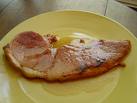(This Boston Accident and Injury Lawyer Blogpost is the Last in a Three Part Analysis of a Recent U.S. Appeals Court Ruling involving defamation, public officials and the news media Click here to view Part One and Click Here to view Part Two)
PART THREE : THE COURT RULES ON THE DEFAMATORY BROADCAST
As stated previously, under Maine common law, a plaintiff alleging defamation must show a false and defamatory statement published without privilege to a third party resulting in harm to the plaintiff.
 In the lower court proceeding, the defendants had contended that the various statements made on the show and attributed to Levesque either were not defamatory or, because Levesque had stipulated that he was a public official, it could not be shown that they were made with actual malice. The district court held that the statements were protected on multiple grounds. It found the “hate crime” comments substantially true and mention of the “anti-ham response plan” protected as “rhetorical hyperbole”.
In the lower court proceeding, the defendants had contended that the various statements made on the show and attributed to Levesque either were not defamatory or, because Levesque had stipulated that he was a public official, it could not be shown that they were made with actual malice. The district court held that the statements were protected on multiple grounds. It found the “hate crime” comments substantially true and mention of the “anti-ham response plan” protected as “rhetorical hyperbole”.
However, the lower court determined that the ham sandwich and the “ham is not a toy” comments were materially false, reasonably susceptible of a defamatory meaning, and highly offensive. Yet the court believed that Levesque had failed to demonstrate that the defendants had acted with constitutional malice when they made the defamatory comments.
The Court of Appeals agreed, finding that most, but not all of the statements attributed to the Plaintiff were largely true, although laced with “imaginative expression” or “rhetorical hyperbole”, which it concluded were protected speech.
With respect to the comment “ham is not a toy” and repeated mischaracterization of the leftover ham steak as a ham sandwich, both attributed to Levesque, when coupled with the defendants’ contemptuous laughter, the Court of Appeals concluded that viewers were encouraged “to form negative conclusions about Levesque, thus tending to harm his reputation”. It thus agreed that a jury might conclude that the statements were highly offensive to a reasonable person and actionable and therefore defamatory.
However, the analysis did not stop there. To establish liability, the Court considered the question whether the Defendant’s statements rose to the level of actual malice.”Recklessness amounting to actual malice may be found where a publisher fabricates an account, makes inherently improbable allegations, relies on a source where there is an obvious reason to doubt its veracity, or deliberately ignores evidence that calls into question his published statements.”
The Court of Appeals found that the defendants had been negligent for failing to investigate the veracity of the Plagman article and to do additional research before attributing the outrageous statements to Levesque. Though the conduct could be characterized as distasteful and careless, the Defendants reported statements only after verifying the underlying facts of the April 11 incident.
Though the research was inadequate, “no facts indicate[d] that the defendants purposefully avoided the truth”. When combined with the “substantial truth” of the story, the Court affirmed the lower court decision and ruled as a matter of law that the there was no actual malice intended when Doocy and Kilmeade made the comments.
________________________________________________________________________
 Boston Accident and Injury Lawyer
Boston Accident and Injury Lawyer

